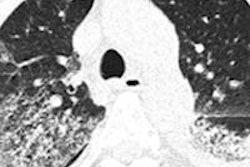A study published on 6 August in BMJ reports on the first probable person-to-person transmission of the new avian influenza A (H7N9) virus in eastern China.
The epidemiological study reported on a father and daughter who recently died after being infected with the H7N9 virus in eastern China. The 60-year-old father regularly visited a live poultry market and became ill five to six days after his last exposure to poultry. He was admitted to the hospital on 11 March, and later died of multiorgan failure on 4 May.
His 32-year-old daughter had no known exposure to live poultry before becoming sick, but provided direct and unprotected bedside care for her father in the hospital before his admission to intensive care. She developed symptoms six days after her last contact with her father and was admitted to the hospital on 24 March. She later died of multiorgan failure on 24 April.
The researchers reported that two almost genetically identical virus strains were isolated from each patient, suggesting transmission from father to daughter. The findings provide the strongest evidence yet of H7N9 transmission between humans, but the authors stress that the ability of the virus to transmit itself is still "limited and nonsustainable," according to BMJ.



















